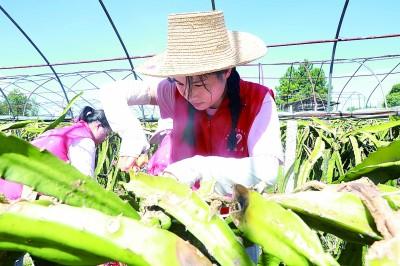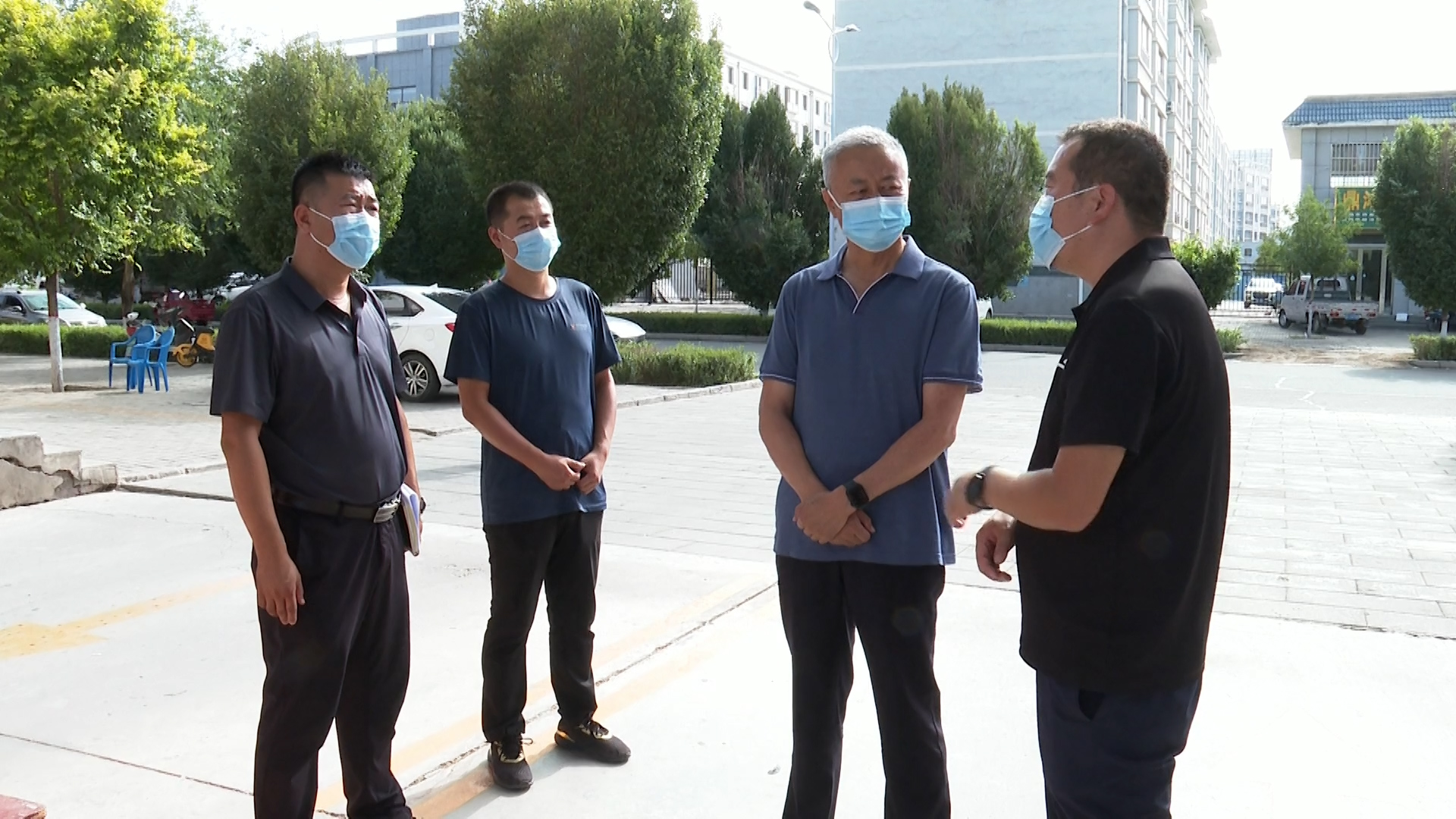Four questions this summer super high temperature weather
Author:Guangming Daily Time:2022.08.14

In the past few days, Jiangxi has continuously issued high -temperature warnings to prevent high temperature and heat damage and ensure the supply of fruit and vegetables, and Volunteer Volunteer Organization of Gao City Township of Yongxin County has carried out agricultural harvesting activities. Yan Jin Photo/Guangming Picture
At 18:00 on August 12, the Central Meteorological Observatory issued the first high -temperature red warning this year. The highest temperature in Shaanxi, Sichuan, Chongqing, Hubei, Hunan, Jiangxi, Anhui, Jiangsu, Shanghai, Zhejiang and other places can reach 40 ℃ ~ 42 ℃ The local area can exceed 42 ° C.
As of August 13, the Central Meteorological Station had issued high -temperature warning for 24 consecutive days. This marks the continuous influence of the regional high -temperature weather process in southern my country since June, and has reached the strongest stage to date. According to Chen Lijuan, chief forecast at the National Climate Center, this year's regional high temperature process will last more than 62 days in 2013, becoming the longest high temperature process since 1961.
How strong is the super high temperature? Why is it so hot? Will it become the norm in the future? The reporter interviewed relevant experts from the China Meteorological Administration and asked them to interpret them one by one.
One question: How hot is this year's south
This cool summer, 40 ° C, who did not dare to imagine in the past, has become the "standard" of the southern region.
According to Wang Zhi, the chief forecaster of the Shanghai Central Meteorological Observatory, as of August 13, the number of high temperatures above 40 ° C for a total of 6 days in Shanghai this year, and the extreme maximum temperature was 40.9 ° C. In the next 10 days, Shanghai will continue to be high -temperature weather, and the extreme maximum temperature can reach 40 ° C ~ 41 ° C.
"Since July, most parts of Zhejiang extreme temperatures are 39 ° C ~ 43 ° C. The highest is three doors 43.1 ° C, Yongjia 42.9 ° C, Qingtian, Yunhe is 42.4 ° C. . "According to Lou Xiaofen, chief forecaster of the Zhejiang Meteorological Observatory, it is expected that in the next 7 days, it is expected that in some areas of northern Zhejiang and western Zhejiang, it will appear in some regions of 43 ° C, or break through extreme high temperature records.
Chongqing's high temperature will also continue to make a large -scale and high -intensity characteristics in July. According to Luo Juan, chief forecast at the Chongqing Meteorological Observatory, it is expected that from August 13th to 22nd, the highest temperature in most parts of Chongqing is 38 ° C ~ 42 ° C, and the local area can reach 43 ° C ~ 44 ° C. More than the historical pole value.
"At present, the regional high temperature process has not exceeded 2013." Chen Lijuan introduced that in the next two weeks, high temperature weather in the south will continue. The longest high temperature process lasts. "
Second question: This summer is so hot, is it normal?
"From late July this year to the present, there is a large -scale and high -strength high -temperature weather in the middle and lower reaches of the Yangtze River. The high -pressure range of the Western Pacific subtropical high -voltage has a large range and strong strength. The southern region of my country is controlled by the auxiliary high air flow, the sky is sunny and cloudy, and the near -ground radiation is strongly heated by the daytime.
"This year, the Western Pacific Auxiliary High Partial High pressure is extremely strong, and it has a close relationship with this year's global sea temperature." Chen Lijuan added.
Chen Tao introduced that in the future, the cooling air in the middle and high latitude is weak, and there is no obvious tropical system on the tropical ocean in the south. Therefore, the subtropical high pressure will continue to control the Sichuan Basin to the middle and lower reaches of the Yangtze River, and the high temperature weather will continue to develop. "Affected by high -temperature weather, a meteorological drought state has appeared in the Sichuan Basin to the middle and lower reaches of the Yangtze River. In the future, this meteorological drought may continue or worsen."
On August 12, the Central Meteorological Observatory issued the first high -temperature red warning this year. How long will the early warning time last?
Chen Tao introduced that in the next two weeks, the Sichuan Basin to the middle and lower reaches of the Yangtze River will continue to continue high temperature weather. "But the scope and intensity of high temperature weather may change, so the warning level will be adjusted and updated according to the weather conditions and forecast conditions."
In response to whether the forecast appearing on the Internet deliberately reduced the question of temperature, Chen Tao responded: "Temperature forecast and live analysis are mainly based on the atmospheric observation data of science, and dynamic analysis and adjustment in real time, will not deliberately adjust the high temperature to low."
Three questions: The heat continues, how does it affect production and life
High -temperature weather has a certain adverse effect on agricultural production in the southern region. Continuing high temperature is not conducive to some crops, especially the growth and development of some economic forest fruit crops. For example, the tea trees or citrus, mango and other fruits in the Jiangnan area are easily threatened by high temperature heat damage. "For high temperature weather, measures should be taken as soon as possible, hydrating operations and spray irrigation to cool down, and remove the fruits that have been affected by thermal damage as soon as possible." Chen Tao said.
Will there be drought in summer and autumn?
Chen Lijuan said: "According to our analysis, the possibility of less precipitation in the Yangtze River Basin in the later autumn is still relatively high, especially in the middle and lower reaches of the middle and lower reaches." Summer and autumn drought. "
In cities, the surge in electricity demand is one of the most significant impacts caused by continuous high temperature. Chen Tao reminded: "The frequency of electricity such as air -conditioning at high temperatures has increased significantly, and the impact on energy insurance supply has a greater impact. Relevant departments should make emergency plans according to the temperature forecast to ensure power supply."
For the public, Chen Tao suggested that during the period of high temperature weather, you should minimize long -term outdoor activities, replenish water in time, and avoid the effects of potential diseases that are easily induced by heat irritation and other high temperatures. "It is important to note that in the summer, in hot weather, students who are on vacation at home must pay attention to stay away from the dangerous waters and prevent drowning accidents." Chen Tao reminded.
Fourth question: Will it be so hot in the next summer?
"The high -temperature heat wave incident in summer is normal, but this summer's high -temperature heat wave event continues time, intensity, and scope of influence, which does reach a very strong level."
Chen Lijuan analyzed: "The rare high temperature weather that has appeared in my country since June this year may be the strongest high temperature incident since 1961. This situation is far from the weather scale. Reason for climate scale. "
"In the context of global warming, high temperature heat waves may become a new normal."
According to Chen Lijuan, according to the IPCC's sixth evaluation report, in the context of global warming, many changes in many extreme weather and climate events have been observed since the middle of the 20th century.
"In the context of global warming, this year's high temperature heat is similar to this year. In the summer, the frequency may appear more." Chen Lijuan said, "This year's high temperature time is too early, and it is expected to end late. This is also late. This is also late. This is also late. The features of "starting early and ending" will become more and more obvious in the future. "
(Our newspaper
【Edit: Li Yan】
- END -
Jian'ou Natural Resources Bureau issued geological disasters Meteorological risk yellow warning
The Fujian Provincial Department of Natural Resources and the Fujian Provincial Meteorological Administration jointly issued a geological disaster meteorological risk yellow warning at 10:04 on June 1
Yang Hongguang inspection and guidance of the epidemic prevention and control work

On July 13, Yang Hongguang, director of the Standing Committee of the County Peopl...